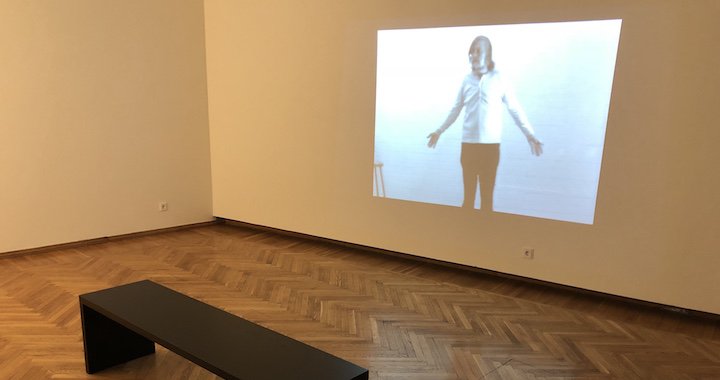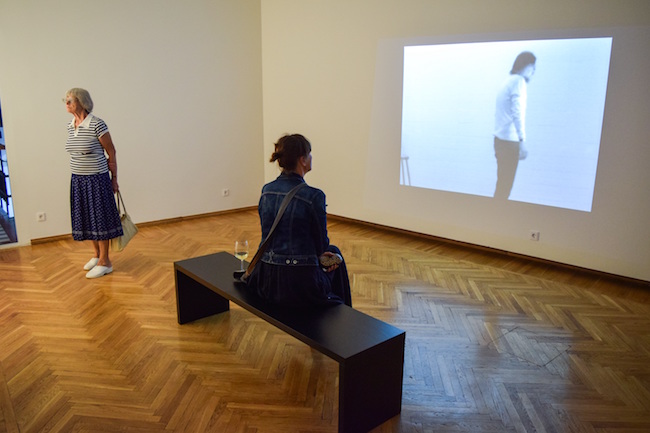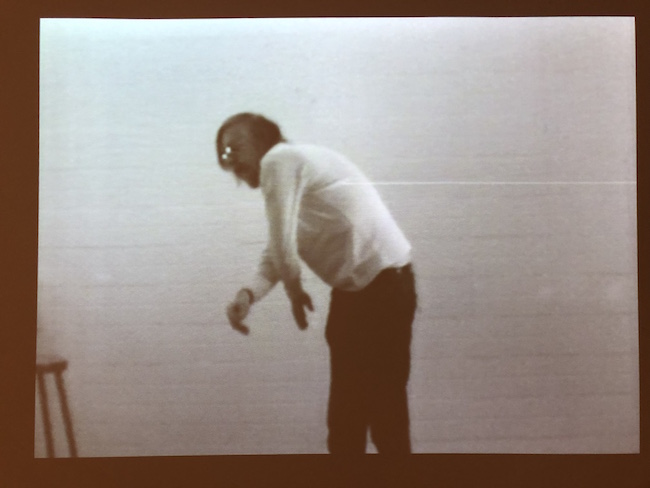
Baldessari in Tartu
Express interview with curator Joanna Hoffmann
22/09/2018
From August 23rd to September 30th, Tartu Art Museum is hosting the exhibition Links to the World: John Baldessari, which is the fourth edition of the international video series Links to the World that has been shown in Tartu since 2017. To find out a bit more, Arterritory spoke with the curator of the exhibition, Joanna Hoffmann.

Arterritory: Why exactly was John Baldessari chosen as the fourth artist for the Links to the World exhibition series?
Joanna Hoffmann: The aim of the Links to the World exhibition series is to introduce the classics of video art to visitors of the Tartu Art Museum. Previously, we have shown the works of Vito Acconci, Martha Rosler and Leslie Thornton. The choice of a given work is based on our desire to place it in dialogue with our other exhibitions.
We usually have two to four exhibitions on display at the museum. This autumn, we’re hosting two substantial painting exhibitions: Cold Look: Variations of Hyperrealism in Estonian Art focuses on hyperrealism, and Lola Liivat: Spiritual Resistance focuses on abstract painting. I understood that it would be difficult to find a conceptual work of video art that would support the themes of these other exhibitions. Therefore, I decided to choose something that is in an interesting opposition to the other exhibitions.
Another interesting aspect comes from the fact that Baldessari’s I Am Making Art (1971) fits into the same timeframe as the other projects. For me, the important idea of the present edition of Links to the World is to emphasise and acknowledge that the means of making art are very rich and are not limited to the traditional media.
Do you believe the turning point in Baldessari’s career – the burning of his paintings – was a local event or did it mean something more, symbolically, for the overall history of conceptual art?
Since the beginning of the 20th century, art has transformed to such an extent that a hundred years ago something like this could not even have been imagined – for example, conceptual art, in which technical mastery and manual skills are not present. Therefore, I think that Baldessari’s act of burning his paintings is one of the most prominent and illustrious examples illustrating this important breaking point in the history of Western art. And it is a marvellous example!
How does Baldessari’s video art resonate in the local context of Tartu and the Tartu Art Museum?
We try to offer a balanced, diverse and contemporary programme. Sometimes we face the question of what is and isn’t art, and we try to make our audience ponder these very questions. We want our audience to be open and receptive to different artistic means of expression and to contemplate what is surrounding them in the galleries.

Do you believe Baldessari’s art has more likely proved or disproved the assumption that “everything can be art”?
We see the work I Am Making Art in museums and exhibitions across the world, so it has definitely proven that the work itself is art. And Baldessari’s art in general has proven this assumption, although the idea that everything can be art could be discussed ad infinitum. I believe that Baldessari’s works have expanded the limits of art in peoples’ minds.
What is the overall objective – if there is one – of the Links to the World series?
To bring the classics of international video art to our local audiences, to create a dialogue with the other exhibitions, and to make people think about the themes that the selected works represent.